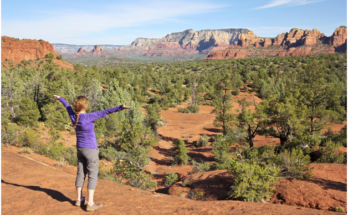Overlanding has become quite a popular activity since the start of the COVID pandemic. So much so that people are starting to misunderstand what it actually is. The concept is being taken out of context and applied in situations that do not line up with traditional definitions. For example, a lot of people confuse boondocking and overlanding. They are not the same.
For the record, ‘boondocking’ is an RVing term that has actually been around for quite a long time. RV owners who prefer boondocking say there is nothing quite like it. You could say the same thing about overlanding. It shares some similarities with boondocking, but it’s really a completely different animal.
More About Boondocking
In the simplest possible terms, boondocking is RV camping without access to any hookups. Everything you need is contained within the RV. You bring your own potable water. You get your electricity from batteries or solar. If you want heat, you run your propane furnace.
Since the only qualification for boondocking is not having access to hookups, an RVer is technically boondocking while spending the night in a Walmart parking lot. More often than not though, boondockers prefer to enjoy the experience in wilderness environments.
What Makes Overlanding Different
Understanding what makes overlanding different begins with a definition. The Overland Journal defines it as “vehicle-supported, self-reliant adventure travel, typically exploring remote locations and interacting with other cultures.” Let’s break this down piece-by-piece.
- Vehicle-Supported – An overlanding vehicle is a support vehicle in the sense that it carries everything the traveler needs. It also doubles as sleeping quarters, office space, workstation, etc.
- Self-Reliant – Overlanders take care of themselves completely. They don’t rely on external support systems for food, medicine, fuel, etc.
- Adventure Travel – To overlanders, it is not about the destination. It’s the journey that matters. The more adventurous the journey, the better the trip.
- Remote Locations – Overlanders take great pride in traveling through remote areas. They may use major highways from time to time, but they prefer to stay off the beaten path.
We will not discuss the last part of the Overland Journal’s definition simply because interacting with other cultures isn’t a necessary requirement. Plenty of overlanders never leave the U.S., thereby never experiencing other cultures. That doesn’t make them any less overlanders than their peers who travel abroad.
A Higher Degree of Specialization
One of the overlanding hallmarks not mentioned by the Overland Journal’s definition is the high degree of specialization in terms of vehicles and equipment. For more on that, we turn to the makers of the Rollercam tie down straps. As avid overlanders themselves, they are very familiar with the equipment the lifestyle demands.
A typical RV could not handle the punishment of overland travel. Overlanding vehicles are heavy duty vehicles that have been modified to handle very punishing terrain and extreme environments. Most of an overlander’s equipment is designed for a particular purpose and built to handle punishment.
This is not to say that overlanders don’t use standard camping equipment like popup tents, camping stoves, and tie down straps. They do. But when push comes to shove, the most important equipment they need for survival is highly specialized and designed to be used in remote environments.
Boondocking and overlanding share some similar aspects. But overlanding is decidedly more demanding. You can boondock anywhere with an RV. But to truly overland, you need to get out and wander into the great unknown with nothing but what you can carry in your vehicle. You need to be self-reliant. You need to be prepared to survive without any support.




